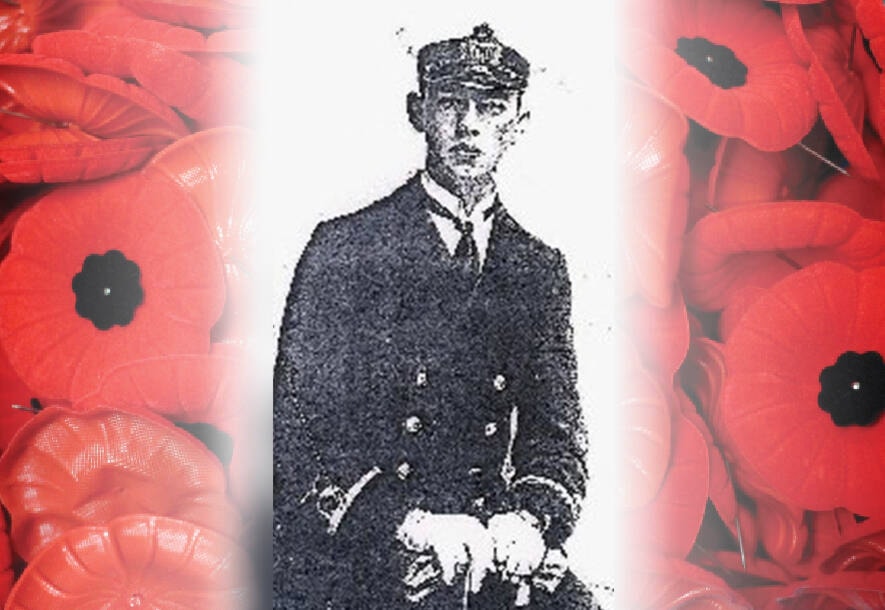More than 100 years ago, a Nanaimo medical student went overseas to fight in the Great War and became one of the most prolific aces of his time.
Capt. Charles Robert Reeves Hickey died in a plane crash a month before the end of the First World War, after 21 aerial victories.
Hickey, the eldest child in his family and son of a major who had served in India, was born in Nanaimo and grew up on his family’s farm in French Creek. He studied for two years at Nanaimo General Hospital before enlisting with the Canadian Mounted Rifles as a 19-year-old in 1916, according to Imperial Vancouver Island by J.F. Bosher.
Hickey transferred to the Royal Naval Air Service and was posted to 4 Naval Squadron in 1917, flying the famous Sopwith Camel and scoring four victories even before the formation of the Royal Air Force in the spring of 1918, the Aerodrome website notes.
It was a time when the war in the skies was rapidly expanding beyond bombing and defence of naval installations, as the Germans had revised their fighter organization.
“With both sides now dedicated to an offensive policy, the stage was set for a struggle for aerial supremacy as relentless as that waged over the Western front,” wrote S.F. Wise in Canadian Airmen and the First World War.
Hickey’s first victory with the RAF’s 204 Squadron came on April 21 of 1918, when he and Capt. Ronald Keirstead forced down a Rumpler C near Wulpen, Belgium.
“After landing beside it, [Hickey] was attempting to protect his prize from Belgian citizens when the German aircraft exploded, killing several bystanders and injuring Hickey,” the Aerodrome noted. “A month later, he was back in action.”
At the end of June, German Gotha heavy bombers gutted two hangars at Bergues in France, destroying 12 Camels and damaging 26 other aircraft, wrote Wise, and Hickey and the 204 Squadron were called upon to retaliate.
“Within hours there occurred the first of a series of large-scale air battles in the Flemish skies,” wrote Wise.
In late summer and early fall, Hickey flew a series of Sopwith Camels – all of them named Billie, after his girlfriend, according to the City of Parksville – and racked up 12 more victories.
“No. 204 seems to have been in almost constant action during these days,” Wise wrote.
Four of Hickey’s victories came Aug. 14-15 in the aftermath of a “major operation” against the German base at Varsenare. Fifty Camels from 204, 210 and 213 Squadrons and the 17th U.S. Aero Squadron were involved in the operation, with support from RAF 211 Squadron.
“Out of the dawn they swept in low over the airfield, shooting up everything in sight and dropping [high explosive] and incendiary bombs,” wrote Wise, noting that some craft came as close as five metres from the ground spraying machine-gun fire.
Hickey had three victories in a Sept. 16 battle pitting 19 Camels against 21 German planes over Blankenberge, Belgium.
Hickey was awarded both the Distinguished Flying Cross and the DFC Bar during the summer and fall of 1918.
“A very determined air fighter…” noted his citation in the London Gazette. “His skill and initiative as a flight commander have made his flight very successful.”
Hickey’s final victory came Oct. 1 east of Lichtervelde, Belgium. He was killed two days later in a crash with another Camel. He was 21.
“To a remarkable degree, Canadians were linked with the beginnings of the strategic use of airpower during the First World War,” Wise wrote. “Though relatively few in numbers, they contributed more than their share of victories.”
READ ALSO: Nanaimo’s other First World War ace remembered
editor@nanaimobulletin.com
Like us on Facebook and follow us on Twitter
